INTRODUCTION
Robotics
History of Robotics
Components and Structure of Robots
Symbolic Representation of Robots
Degrees of Freedom and Workspace
Classification of Robots
Common Kinematic Arrangements
Robotic Systems
Accuracy and Repeatability
Wrists and End-Effectors
Outline of the Text
RIGID MOTIONS AND HOMOGENEOUS TRANSFORMATIONS
Representing Positions
Representing Rotations
Rotation in the plane
Rotations in three dimensions
Rotational Transformations
Summary
Composition of Rotations
Rotation with respect to the current coordinate frame
Rotation with respect to a fixed frame
Summary
Parameterizations of Rotations
Euler Angles
Roll, Pitch, Yaw Angles
Axis/Angle Representation
Homogeneous Transformations
FORWARD KINEMATICS: THE DENAVIT-HARTENBERG CONVENTION
Kinematic Chains
Denavit Hartenberg Representation
Existence and uniqueness issues
Assigning the coordinate frames
Summary
Examples
INVERSE KINEMATICS
The General Inverse Kinematics Problem
Kinematic Decoupling
Inverse Position: A Geometric Approach
Inverse Orientation
VELOCITY KINEMATICS -- THE MANIPULATOR JACOBIAN
Angular Velocity: The Fixed Axis Case
Skew Symmetric Matrices
Angular Velocity: The General Case
Addition of Angular Velocities
Linear Velocity of a Point Attached to a Moving Frame
Derivation of the Jacobian
Angular Velocity
Linear Velocity
Examples
The Analytical Jacobian
Singularities
Decoupling of Singularities
Wrist Singularities
Arm Singularities
Inverse Velocity and Acceleration
Redundant Robots and Manipulability
Redundant Manipulators
The Inverse Velocity Problem for Redundant Manipulators
Singular Value Decomposition (SVD)
Manipulability
COMPUTER VISION
The Geometry of Image Formation
The Camera Coordinate Frame
Perspective Projection
The Image Plane and the Sensor Array
Camera Calibration
Extrinsic Camera Parameters
Intrinsic Camera Parameters
Determining the Camera Parameters
Segmentation by Thresholding
A Brief Statistics Review
Automatic Threshold Selection
Connected Components
Position and Orientation
Moments
The Centroid of an Object
The Orientation of an Object
PATH PLANNING AND COLLISION AVOIDANCE
The Configuration Space
Path Planning Using Configuration Space Potential Fields
The Attractive Field
The Repulsive field
Gradient Descent Planning
Planning Using Workspace Potential Fields
Defining Workspace Potential Fields
Mapping workspace forces to joint forces and torques
Motion Planning Algorithm
Using Random Motions to Escape Local Minima
Probabilistic Roadmap Methods
Sampling the configuration space
Connecting Pairs of Configurations
Enhancement
Path Smoothing
Historical Perspective
TRAJECTORY PLANNING
The Trajectory Planning Problem
Trajectories for Point to Point Motion
Cubic Polynomial Trajectories
Multiple Cubics
Quintic Polynomial Trajectories
Linear Segments with Parabolic Blends (LSPB)
Minimum Time Trajectories
Trajectories for Paths Specified by Via Points
4-3-4 trajectories
DYNAMICS
The Euler-Lagrange Equations
One Dimensional System
The General Case
General Expressions for Kinetic and Potential Energy
The Inertia Tensor
Kinetic Energy for an n-Link Robot
Potential Energy for an n-Link Robot
Equations of Motion
Some Common Configurations
Properties of Robot Dynamic Equations
The Skew Symmetry and Passivity Properties
Bounds on the Inertia Matrix
Linearity in the Parameters
Newton-Euler Formulation
Planar Elbow Manipulator Revisited
INDEPENDENT JOINT CONTROL
Introduction
Actuator Dynamics
Set-Point Tracking
PD Compensator
Performance of PD Compensators
PID Compensator
Saturation
Feedforward Control and Computed Torque
Drive Train Dynamics
MULTIVARIABLE CONTROL
Introduction
PD Control Revisited
Inverse Dynamics
Task Space Inverse Dynamics
Robust and Adaptive Motion Control
Robust Feedback Linearization
Passivity Based Robust Control
Passivity Based Adaptive Control
FORCE CONTROL
Introduction
Constrained Dynamics
Static Force/Torque Relationships
Constraint Surfaces
Natural and Artificial Constraints
Network Models and Impedance
Impedance Operators
Classification of Impedance Operators
Thévenin and Norton Equivalents
Force Control Strategies
Impedance Control
Hybrid Impedance Control
FEEDBACK LINEARIZATION
Introduction
Background: The Frobenius Theorem
Single-Input Systems
Feedback Linearization for N-Link Robots
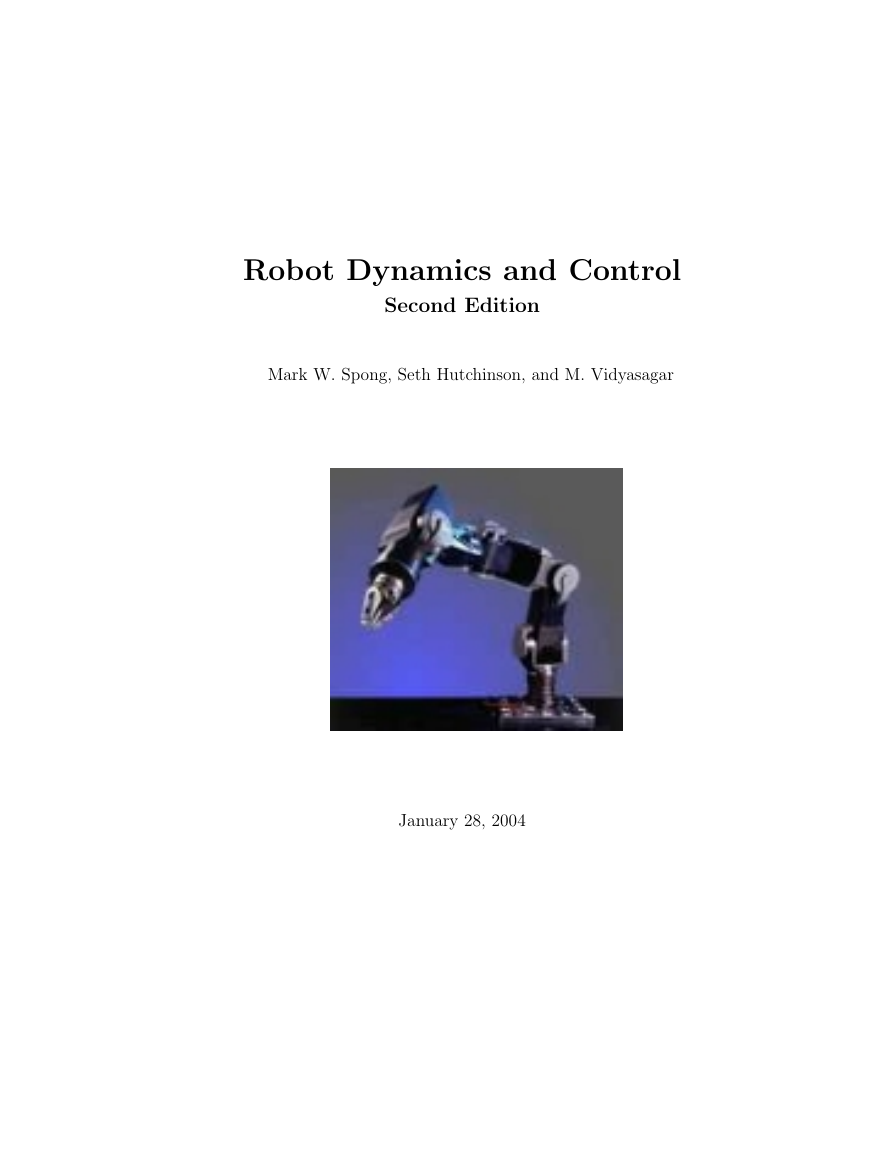

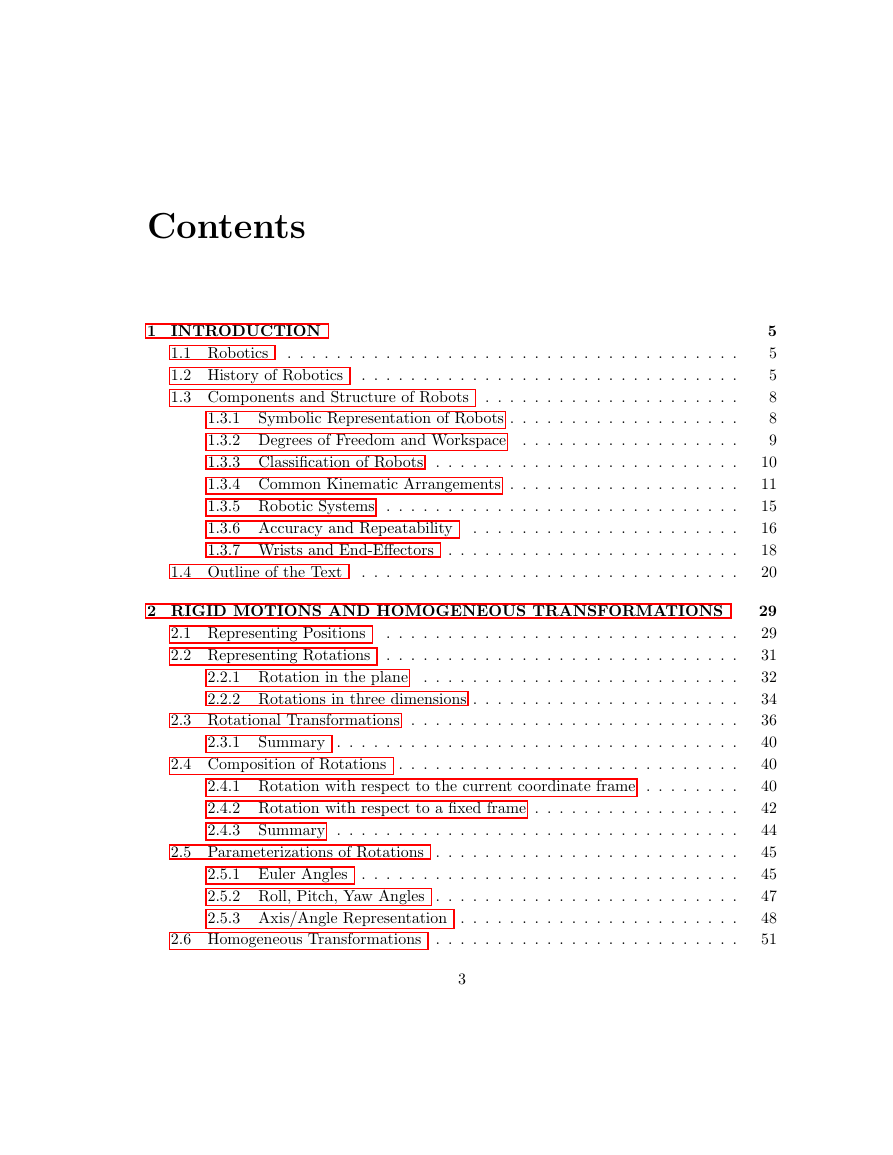
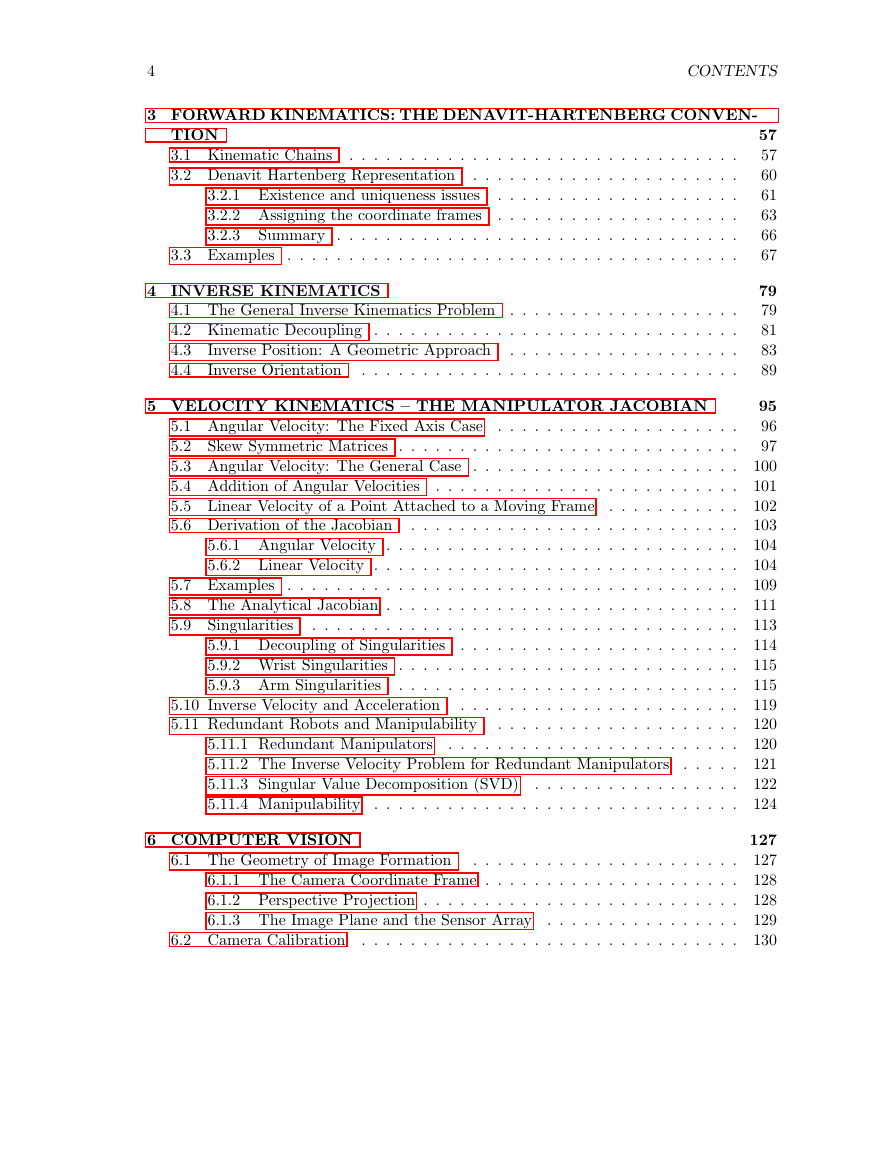
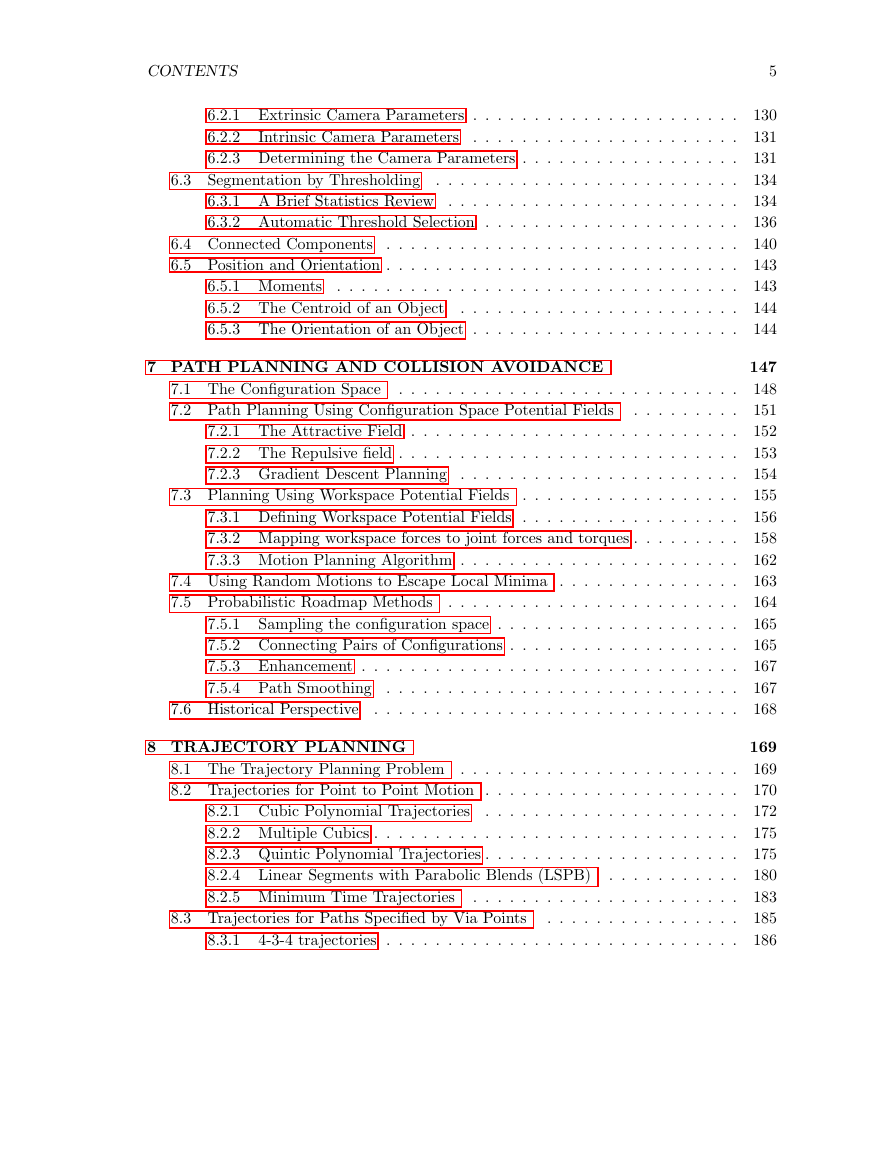
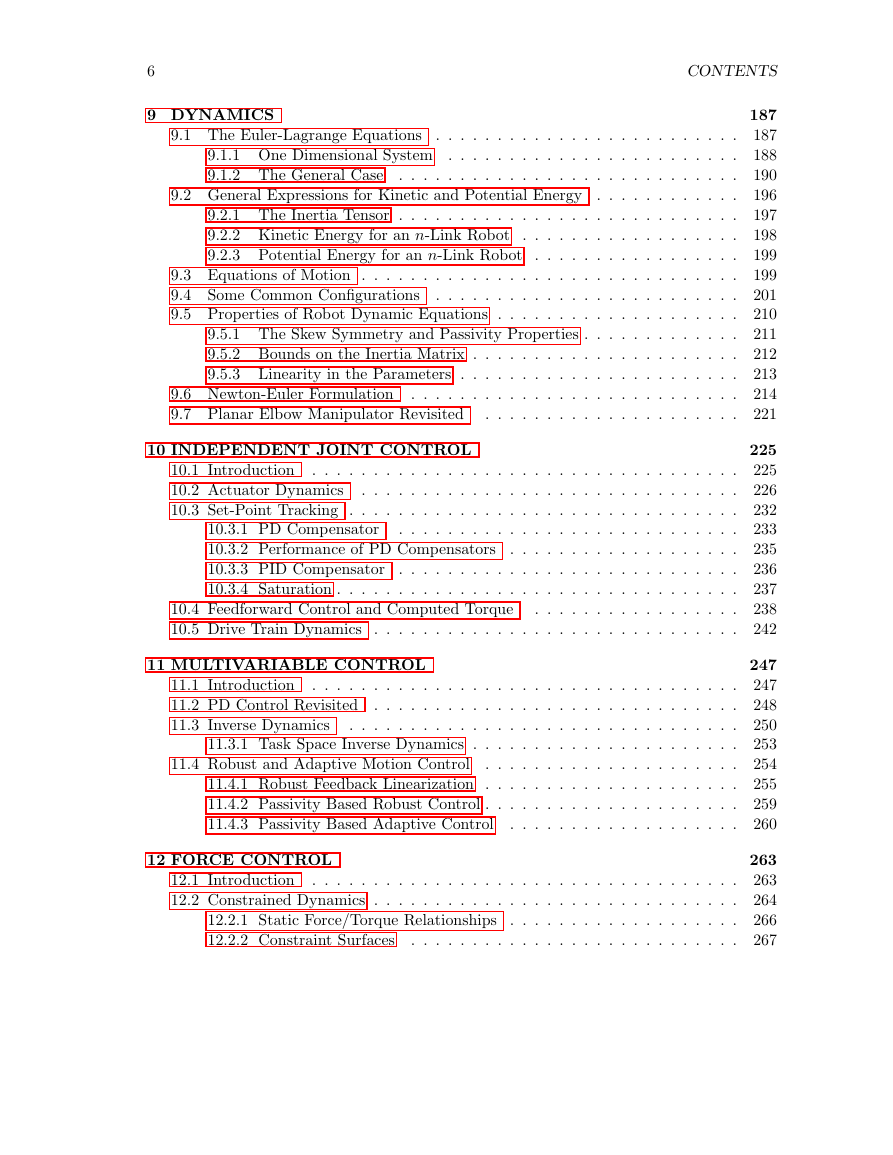
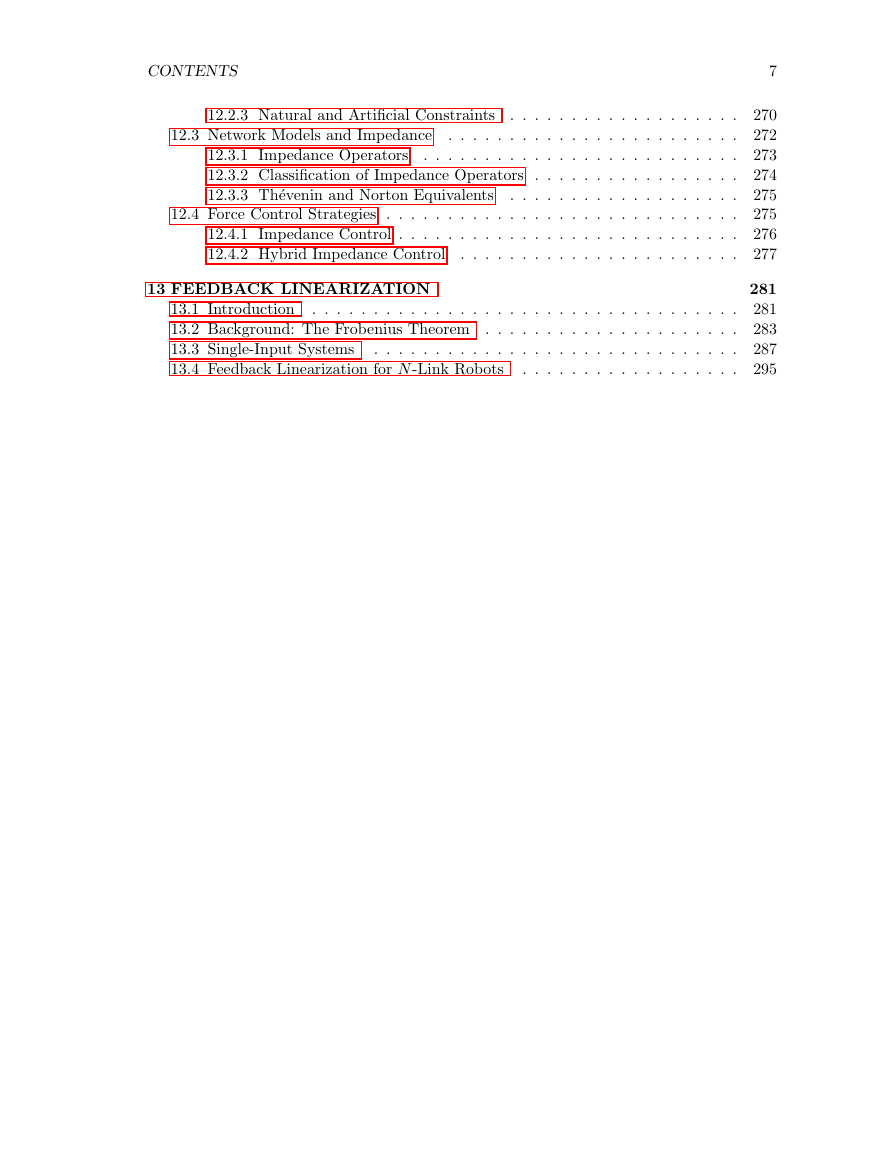









 2023年江西萍乡中考道德与法治真题及答案.doc
2023年江西萍乡中考道德与法治真题及答案.doc 2012年重庆南川中考生物真题及答案.doc
2012年重庆南川中考生物真题及答案.doc 2013年江西师范大学地理学综合及文艺理论基础考研真题.doc
2013年江西师范大学地理学综合及文艺理论基础考研真题.doc 2020年四川甘孜小升初语文真题及答案I卷.doc
2020年四川甘孜小升初语文真题及答案I卷.doc 2020年注册岩土工程师专业基础考试真题及答案.doc
2020年注册岩土工程师专业基础考试真题及答案.doc 2023-2024学年福建省厦门市九年级上学期数学月考试题及答案.doc
2023-2024学年福建省厦门市九年级上学期数学月考试题及答案.doc 2021-2022学年辽宁省沈阳市大东区九年级上学期语文期末试题及答案.doc
2021-2022学年辽宁省沈阳市大东区九年级上学期语文期末试题及答案.doc 2022-2023学年北京东城区初三第一学期物理期末试卷及答案.doc
2022-2023学年北京东城区初三第一学期物理期末试卷及答案.doc 2018上半年江西教师资格初中地理学科知识与教学能力真题及答案.doc
2018上半年江西教师资格初中地理学科知识与教学能力真题及答案.doc 2012年河北国家公务员申论考试真题及答案-省级.doc
2012年河北国家公务员申论考试真题及答案-省级.doc 2020-2021学年江苏省扬州市江都区邵樊片九年级上学期数学第一次质量检测试题及答案.doc
2020-2021学年江苏省扬州市江都区邵樊片九年级上学期数学第一次质量检测试题及答案.doc 2022下半年黑龙江教师资格证中学综合素质真题及答案.doc
2022下半年黑龙江教师资格证中学综合素质真题及答案.doc